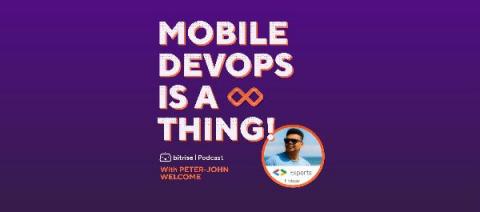Systems | Development | Analytics | API | Testing
September 2021
Monitor and improve your Bitrise performance with Build Insights
We received many feature requests asking for 'build statistics' to help you understand where you can improve your build performance and be more effective. Today, we launch Build Insights to give you that and more.
Why is Testsigma a perfect solution for automating your cross-browser testing on the cloud?
Today, there are 1.88 billion websites on the internet and the number is rapidly increasing. There are 3.8 billion people in the world that own smartphones today – which amounts to 48.16% of the world population. The internet traffic from mobile (as compared to that from desktops) has also been increasing, and now stands at 56%. The point I am trying to make is that if you have a website – it can be accessed from a web browser or a mobile browser.
Bugfender Remote Logger, Crash Reporter and In-App User Feedback
The alternative app store opportunity for Android developers
Apple and Google’s dominance over mobile app stores has never seemed less certain, and there are many signs that new payment methods and alternative app stores might become the norm. They aren’t exactly new, though. What are alternative app stores? What opportunities do they provide? And why aren’t developers publishing there en masse, today?
Testsigma as a mobile testing tool - how can it help me achieve ROI faster?
Let’s start this post with a situation. An organization working in the logistic business has started to gather positive reviews and millions of users are now opting for their services through their mobile app. In other words, the organization is scaling very fast. Even though they were managing quite well with manual testers and in-house test automation setup, they know this arrangement cannot work for long. They are smart people.
Managing Secrets in a central location: Secret Envs filtering
We’ve just released (the first phase of) a new feature called Secret Envs filtering that enables managing secrets in a central location. Now you can set env vars as secrets from within your Workflows, mask them, and with a Script Step, use secrets from an external vault/company’s own service.
App Ray | Verified Steps on Bitrise
Oversecured | Verified Steps on Bitrise
DeviceFarmer | Verified Steps on Bitrise
DexProtector | Verified Steps on Bitrise
Localazy | Verified Steps on Bitrise
Linux builds are now 15-20% faster on Bitrise
We’d just want to let you know that your builds running on Linux are now faster. And that this is included in your plan, so you don’t have to do anything, just enjoy the ride or read the details.
5 mobile app testing QA best practices from industry experts
Mobile app testing can be time-consuming, error-prone, and sometimes expensive if not done the right way. But mobile app testing is a critical part of the development process, so skipping it comes at a huge cost to end UX. To compete with the millions of mobile apps on the market, your set of best practices must ensure that the user experience is incredible for every consumer every time they use your app, starting from the first try. Not sure where to begin?
What are the advantages of automating your mobile testing on the cloud?
According to Gartner, in the second quarter of 2021, mobile phone sales reached 328.8 million units with an increase of 10.8% year-on-year growth. It is remarkable and quite expected too! This outlines the need for using cloud-based automation platforms for mobile testing. Because when we are dealing with huge numbers and a global audience, it is the best bet.
Quality, cost, and speed in mobile development: can you have it all?
It's a common belief that within the quality, cost, and speed triangle, only two elements can be optimized for. But is this true? I'll show you why quality is non-negotiable, and how Bitrise helps mobile teams get the balance right.
Test Push Notifications and Universal Links with the open-source Mussel Step
We’re always delighted to announce a new Verified Step: this time, we’re checking in with the Mussel Verified Step. Find out how can it help you with testing Push Notifications and Universal Links.
The benefits of using Bitrise
The roadmap to mobile success with Peter-John Welcome
In this podcast episode, we talked to Google Developer Expert Peter-John Welcome about his experience in Android DevOps, the roadmap to mobile success and the steps developers need to take to get there.
Perfecto | Verified Steps on Bitrise
React Native E2E UI testing with Detox and Bitrise
This article is a step-by-step guide on how to run your end-to-end testing for React Native apps with Detox and Bitrise.
A guide to feature flags in mobile development
Launching new features isn't always a smooth ride. Enter: feature flags. Feature flags are a way of managing new features and circumventing lengthy app approval processes when bugs do occur. This article will cover the fundamentals and show you how to get started.























